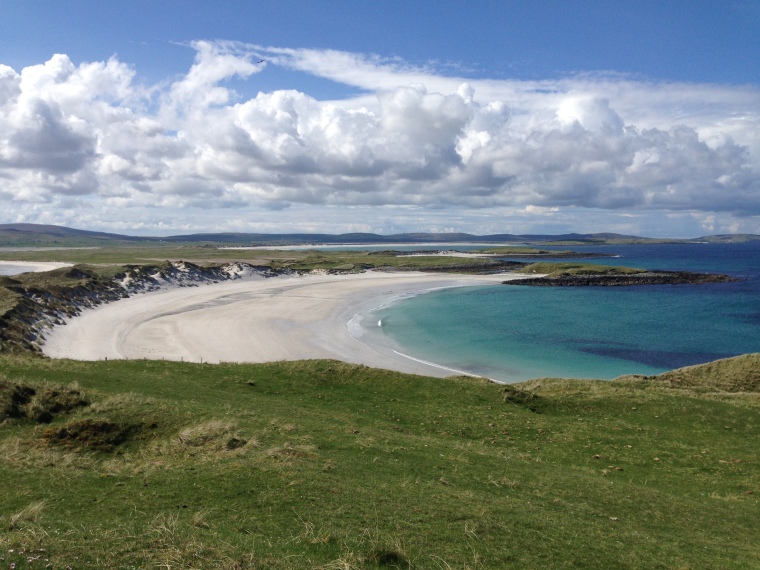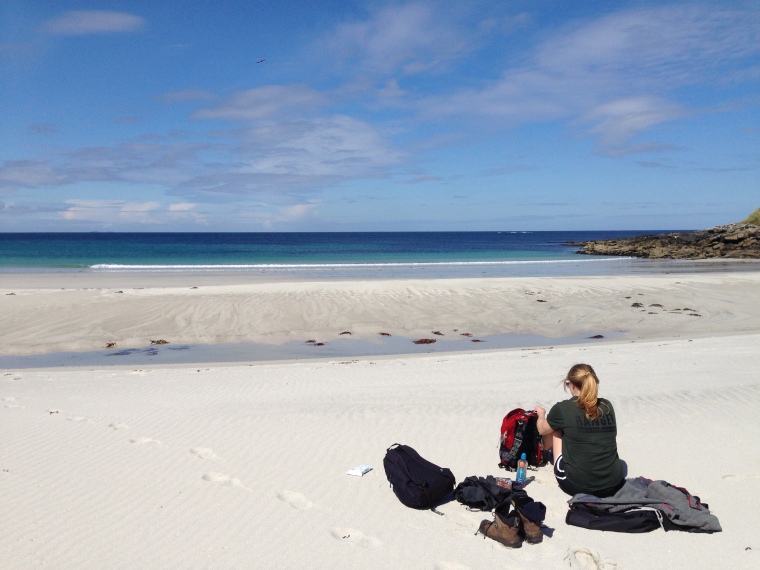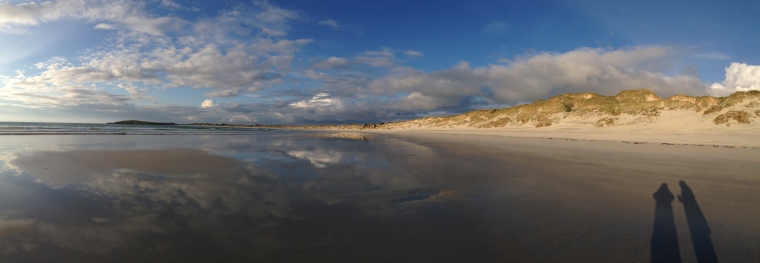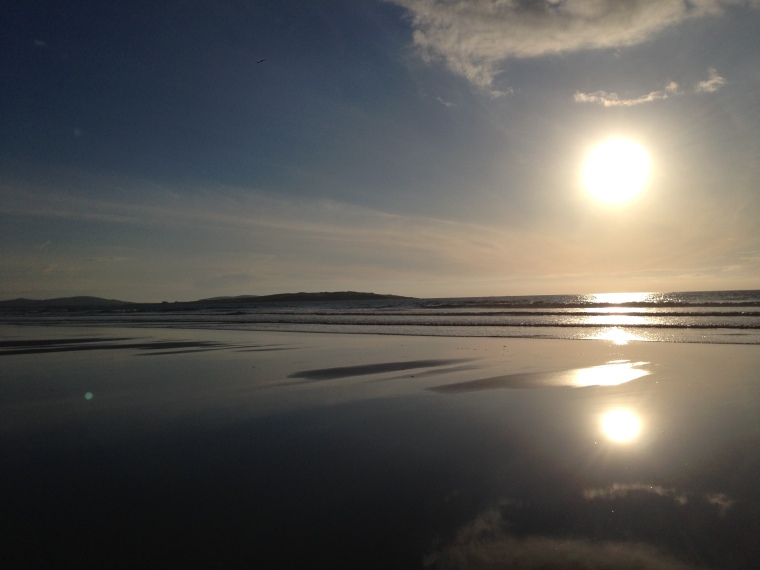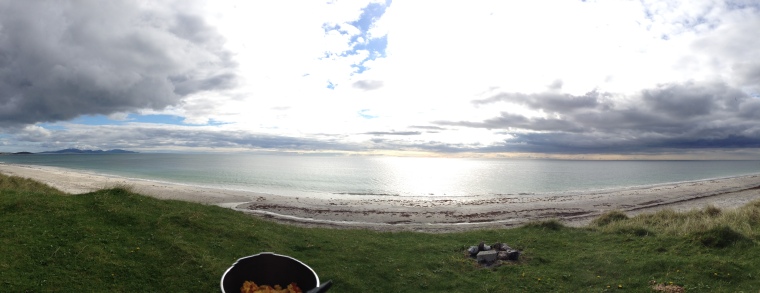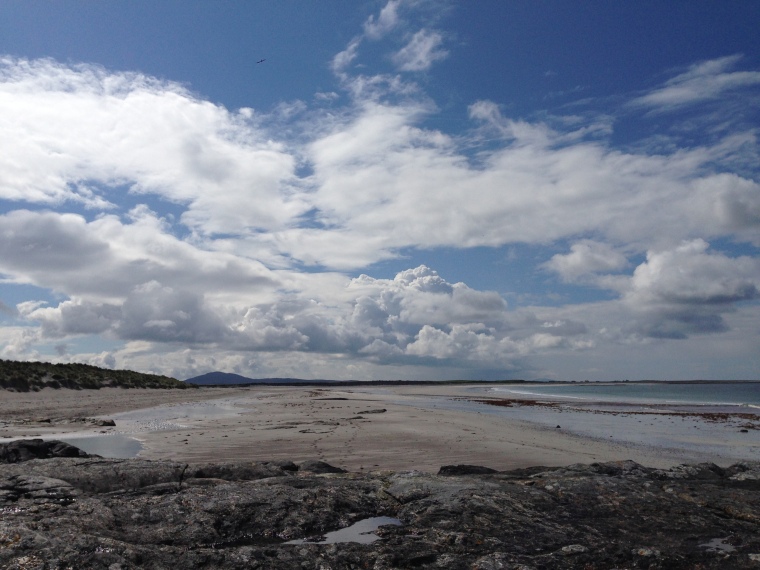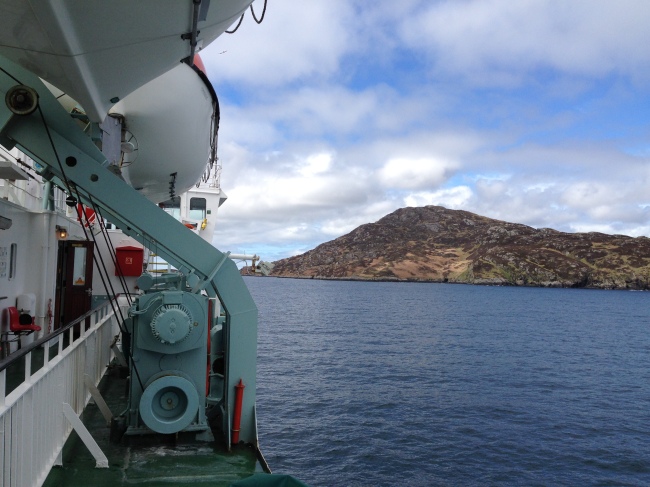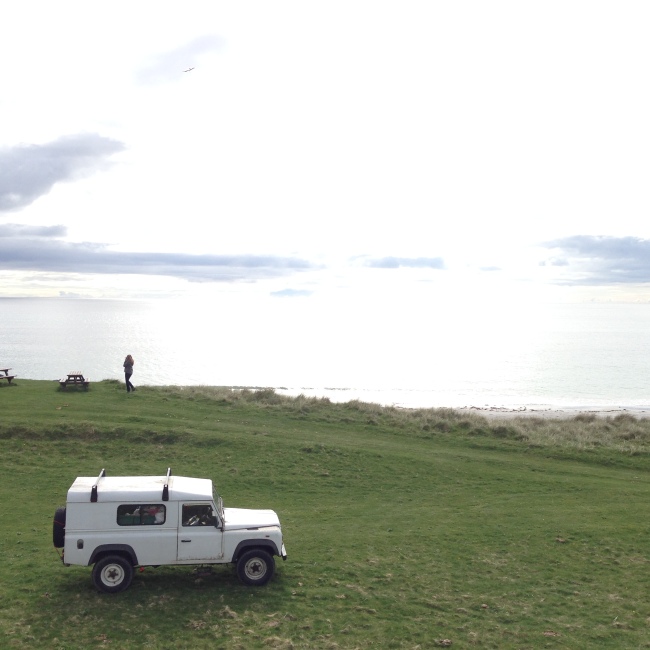Up and behind the wheel again, we made our way North on the road to Ness. Having picked up a flyer on Hebridean arts and crafts, we stopped in a couple of places on the way to the lighthouse at the Butt of Lewis. The best place we went was Borgh Pottery – http://www.borghpottery.com – from the outside, a cute home surrounded by blooming gardens and a few characterful touches. From the inside it is a clean, light and bright space full of beautiful handcrafted pottery and other bits and pieces by local makers and creators. A window through to the workshop ‘guarded’ by a big sleepy dog showed a helpful and happy owner busy at work.
Back in the Land Rover it was time for some adventure. Arriving at the lighthouse we had a little look around the most north-westerly part of the island – wind whipping at our clothes and faces, the sea broiled beneath us as we stood atop the cliffs. A seal bobbed about the water in a more sheltered cove and the birds flew past as they were caught in the frequent gusts. We made our way back down the road a very short way as we’d seen a steep slipway down to a protected, sandy bay – time to take the Land Rover to the beach. Nose to the sea, she did it perfectly, allowing us to enjoy a hot chocolate looking out to sea.
Crossing from west to east, the landscape served to act as a strong reminder of how remote the islands are. The desolate heathland stretched as far as you could see, like being on a boat in a vast ocean, and conjured fearful visions of being lost and alone in the dull and darkening weather. Glad of the engine under the bonnet speeding us on, we arrived in Stornoway ready for the sites of the city.
I use the term ‘city’ very loosely – although a greater settlement of houses and amenities than we had seen anywhere else (two supermarkets no less!), the town took no more than 10 minutes to drive into and we were expecting a little more in the way of cafes and eateries considering the prowess of the Hebridean black puddings, cheeses and condiments. Having said that, we did find the Stornoway arts centre, An Lanntair – a great cultural, creative place with a small shop, cafe, gallery and exhibition spaces. We also managed to find some good old fashioned fish and chips and a traditional sweet shop then headed for the impressive looking Lews Castle. Unfortunately it was being refurbished so we couldn’t get inside but the surrounding park was lovely and we enjoyed the walk around outside. Now it was time to get out of the town and find a quiet spot to park up for the night.
On the road directly north of Stornoway, we drove as far as we could go to find Triagh Mhor. It was the perfect spot where it was time for a walk on the beach before dinner and hitting the hay.



















